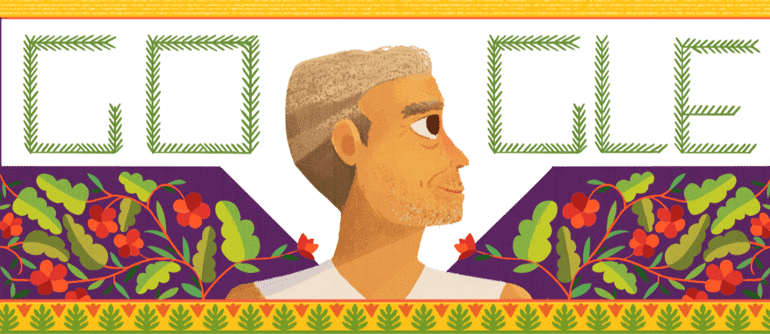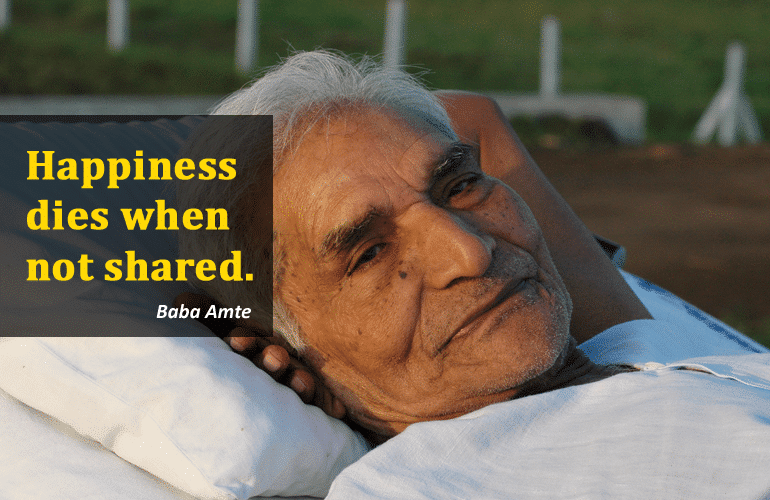He was born with a silver spoon, but his compassion and kindness for the neediest of countrymen drove him to become a social worker and an activist. All his life he worked for national unity and for the empowerment of people affected with leprosy. This man found “Joy more infectious than leprosy.”
While Google honors his life and legacy with a slideshow doodle on his 104th birth anniversary, here are 10 lesser known facts about Baba Amte.

- Murlidhar Devidas Amte was born to a wealthy family in Hinganghat, Wardha district of Maharashtra on December 26, 1914, surrounded by affection, also by luxurious cars, sports, and animal hunting.
- His father was a wealthy landowner and a powerful bureaucrat during the pre-independence British Raj and Murlidhar was lovingly called as “Baba” by his parents.
- While in his 20s, he initially sought a career in law and was running his own successful firm but despite living a lavish life, he was aware of India’s class inequalities during that time.
- Amte left his practice when he was in his 30s and started working with the underprivileged section of the society- the rag pickers and sweepers of Chandrapura district in Jharkhand. It was during that time when he came across a man suffering from leprosy and was so stirred by it that it changed his life forever.
- The very sight of a man, who is dying from a decaying body filled him with a sense of overwhelming fear and went on to identify the state of “mental leprosy“. He also fought against the social stigmas attached to leprosy that it is highly contagious. To prove his theory, he also injected himself with bacilli, so that people can break their chain of fear.
- Amte believed that the worst disease is not a physical deformity but losing one’s emotional strength to feel compassion. He was an ardent follower of Mahatma Gandhi and he embraced the Gandhian philosophy of life as well. It was Gandhi himself, who gave Amte the title of “Abhay Sadhak”
- In 1946, he married Sadhana Guleshastri, who was also a believer of humanity and had always supported Baba Amte in his social work.
- In 1949 he established Anandwan, which translates into English as “Forest of Bliss”, is a self-sufficient village and rehabilitation center for leprosy patients. It started from under a tree and in 1951, turned in to a 250-acre campus. Today it consists of a university, two hospitals, an orphanage and a school for the blind.
- Further, in December 1985, at the age of 72, he launched the nationwide Bharat Joro Andolan (Knit India March) and walked from Kanyakumari to Kashmir, a distance of 3,000 miles to motivate Indians to stay united and was accompanied by 116 people, all aged under 35. Three years later, he organized another march and traveled from Assam to Gujarat.
- His selfless work for the needy was acknowledged in India and across the globe and he went on to win Padma Shri Award in 1971, Padma Vibhushan in 1986, Jamnalal Bajaj Award in 1979, Templeton Prize in 1990, United Nations Prize in the Field of Human Rights in 1988, and Gandhi Peace Prize in 1999.

In Amte’s words, “I took up leprosy work. Not to help anyone, but to overcome that fear in my life. That it worked out good for others was a by-product. But the fact is: I did it to overcome fear.”
Even though he passed away on February 9, 2008, Baba Amte continues to live between us forever for his extraordinary and tireless contribution towards humanity.

